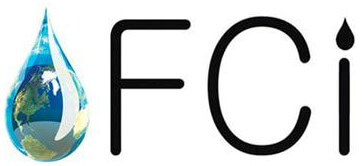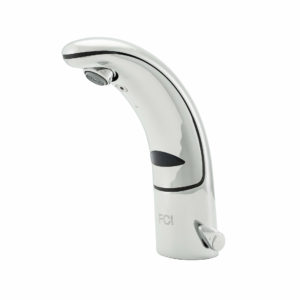One of the most exciting introductions to faucet design in the past decade is touchless technology. While it might seem like an unnecessary feature for a home faucet, it is a convenience more and more homeowners can’t live without. Here we take a behind-the-scenes look at touchless faucet technology to help you understand the many benefits hands-free faucets offer.
What is Touchless Faucet Technology?
Hands-free faucets are actually considered the latest small appliance for kitchens. However, they can be installed in the bathroom or even the laundry room. They work using motion sensors allowing you to turn the water on and off with the wave of your hand. You can also activate them by waving something like a pan under the sensors.
You’ve probably used the same technology in public bathrooms, as this technological advance in touchless faucets helps reduce the spread of germs. They are extremely convenient in households, making it easier for avid cooks to turn on their water hands-free. Of course, they also help reduce the spread of germs both in the kitchen and the bathroom. Adding to their appeal is the fact they also help reduce water waste.
How Does Touchless Faucet Technology Work?
The sensors used for touchless faucets need a power supply. You can choose between two power sources:
- Battery-operated: These faucets tend to be more affordable but do require attention to make sure the batteries are always replaced. Otherwise, you could end up without water when you really need it. In busy households, the batteries could require replacing several times a month depending on the frequency of use. This in turn adds to the cost of the faucet, so keep this in mind. There are energy-efficient models available, which can help increase battery life. Rechargeable batteries are an excellent choice to help reduce costs.
- Alternating current (AC) transformer: These models require power access via a plug. They tend to cost more, but also save you money without the need to worry about the cost of batteries. As well you’ll never get caught with dirty hands with a source of water as the AC source is constant. Unfortunately, AC power is more difficult to come by as most kitchens don’t have a power source close enough. In most cases, you would have to install an electrical connection under your sink which greatly increases cost.
- Dual power option: For maximum convenience and to help reduce the risk of losing your power source when you need it most, dual power option touchless faucets are available. As the name suggests, a dual power faucet can be powered using batteries or an electrical current.
As you can see the power source is an important consideration when shopping for your touchless faucet.
Water Conservation
You might not realize that using a traditional kitchen faucet can waste as much as 10 litres of water per minute. Touchless faucets turn off once they sense you are no longer there, saving you from wasting water. This is especially important in households with kids who tend to forget to turn the taps off, or who might enjoy playing with running water at the sink.
When purchasing your touchless faucet always check the flow rate so you understand how much water it uses. Water flow is measured in gallons per minute (GPM). The lower the GPM the less water is wasted when running the faucet.
Activation Type
On top of the power source, you also have to consider the way the faucet is activated. These are two different features. Activation type is based on the type of motion-detecting sensors while power is what allows the faucet to operate. Choosing a faucet with multiple sensors makes it easier to operate, as they become more accurate.
They also aren’t as finicky about where your hands or pots have to be in order to activate the water. You want the water to activate when you need it, so you aren’t moving around all over the place trying to hit the right mark. On the flip side, you also don’t want the sensors to be overly sensitive and trigger at the slightest of motions, or you might turn it on without realizing it. This of course wastes water.
Counter vs Wall Mount Touchless Faucets
Like any faucet, you can find both counter and wall mount models. Wall mounts are more common in bathrooms. However, modern kitchen designs often call for the wall mount. A touchless wall mount faucet is the ultimate for ultra-sleek designs in both kitchens and bathrooms.
Long Neck, Gooseneck and Basic
A popular choice for kitchen faucets is the counter mounted gooseneck faucet as they offer more height ideal for filling large pots. If you have limited counter space, there is also the wall-mounted gooseneck for increased spaciousness and a sleek design. The long neck is both sleek and practical providing more room for handwashing and smoother water flow. The basic faucet design is functional, yet elegant and can be used in bathrooms including modern tub configurations.
The Importance of Spout Height
As mentioned above, faucets come with various mounts and necks. Both contribute to spout height which is the space between the bottom of the faucet and the sink. Some things to consider when choosing spout height include:
- The depth of your sink
- For wall mounts, whether you have leeway to move the spout up or down on the wall when installing it
- How many sinks you have to determine how long the neck must be to reach all of the sinks
- Reach for bathtubs to avoid slopping water when filling the tub
- Enough room to wash your hands for bathroom sinks
- Enough space to accommodate pots and pans for kitchen or utility sinks such as the laundry room
All of these details must be considered when choosing your touchless faucet.
Number of Holes in the Sink
One of the benefits of touchless faucets is that they only require one hole. If you had a sink with more than one hole, your touchless faucet might not work unless you plan to replace the sink. You can also consider using the existing holes to install a small side tap for boiling water, or as a soap dispenser when you purchase your new touchless faucet.
If you are installing a touchless faucet in your home, Canada Faucet offers state-of-the-art options to suit your needs. Click here to view the faucets available, or get in touch with our team today to find the right option for your needs.







